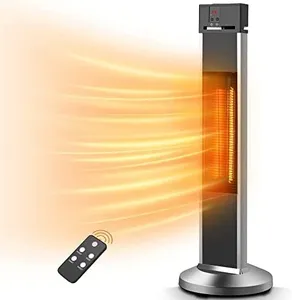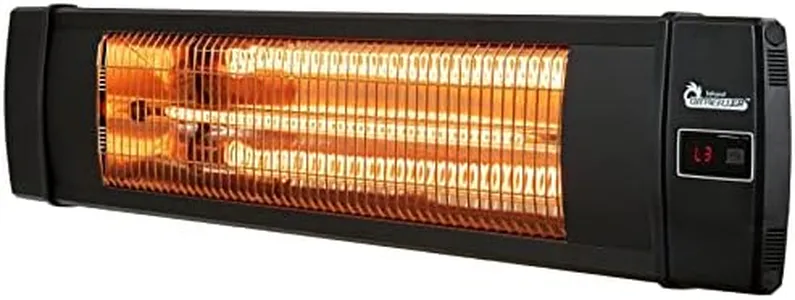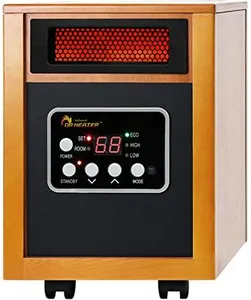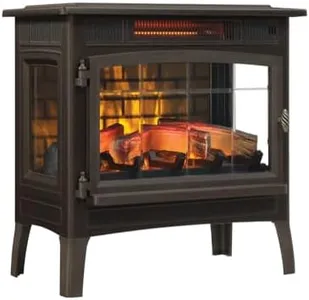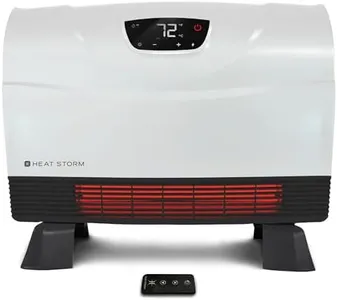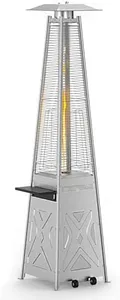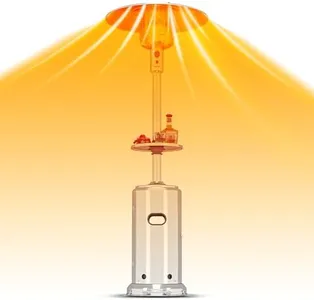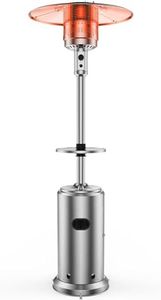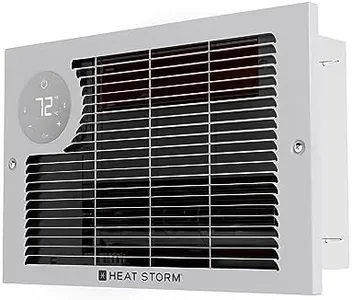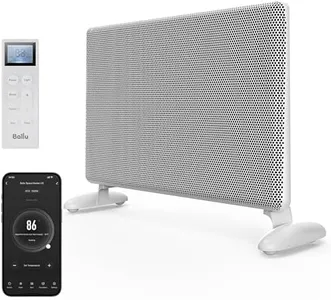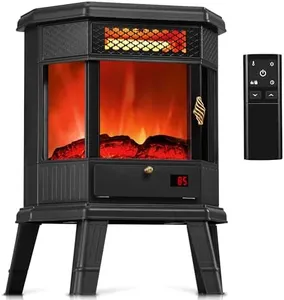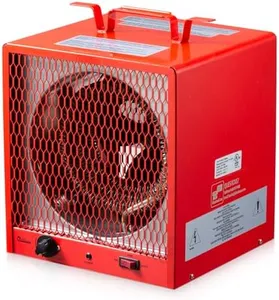10 Best Infrared Heaters 2025 in the United States
Our technology thoroughly searches through the online shopping world, reviewing hundreds of sites. We then process and analyze this information, updating in real-time to bring you the latest top-rated products. This way, you always get the best and most current options available.

Our Top Picks
Winner
Dr Infrared Heater DR-238 Carbon Infrared Outdoor Heater for Restaurant, Patio, Backyard, Garage, and Decks, Standard, Black
Most important from
5102 reviews
The Dr Infrared Heater DR-238 is a versatile infrared heater suitable for both indoor and outdoor use, making it ideal for areas like patios, backyards, garages, and restaurants. It boasts three power settings (900W, 1200W, 1500W) that provide clean, instant, and odorless heat. The heater operates on standard 120V power and comes with a remote control for easy operation. It includes mounting brackets for wall and ceiling installation, enhancing its flexibility in placement.
The aluminum construction is both durable and weatherproof, ensuring long-term use in various environments. The high-level mirror aluminum reflector boosts its heating efficiency, making it an energy-efficient choice. It does require some assembly and includes batteries for the remote control. Weighing 8 pounds, it is relatively portable but primarily designed for fixed installation. The heater has a sleek black appearance that can blend well in various settings.
The inclusion of a 1-year limited warranty adds a layer of assurance. Potential buyers should consider the need for basic assembly when making their decision.
Most important from
5102 reviews
Dr Infrared Heater DR-268 Smart Greenhouse Heater with built in Temperature Control and Digital Thermostat
Most important from
70 reviews
The Dr Infrared Heater DR-268 Smart Greenhouse Heater is designed for both indoor and outdoor use, making it versatile for various settings such as greenhouses, garages, and patios. It features a water resistance rating of IPX5, which ensures it can withstand humid environments. The heater has a digital display and built-in thermostat control, allowing you to accurately regulate the temperature and choose between Auto and Manual modes.
With two heat settings (1000W and 1500W), it can effectively cover an area of 150-200 square feet, making it suitable for small to medium-sized spaces. The heater is constructed from durable aluminum, which helps prevent heat loss and withstand harsh conditions. It comes with multiple mounting options, including wall, ceiling, and hanging mounts, providing flexibility in installation.
Safety features include overheat protection, ensuring safe operation. Additionally, it operates quietly, making it a good choice for areas where noise can be a distraction. However, the heater does require assembly and batteries for operation. The Dr Infrared Heater DR-268 offers a good balance of performance, safety, and versatility for those needing an efficient heating solution for their greenhouse or similar space.
Most important from
70 reviews
Dr Infrared Heater Portable Space Heater, Original, 1500-Watt, Cherry (Pack of 1)
Most important from
26437 reviews
The Dr Infrared Heater Portable Space Heater is designed for larger rooms, making it suitable for those needing efficient heating in areas like bedrooms, home offices, or living spaces. With a powerful 1500-watt output, it combines a dual heating system of infrared quartz and PTC technology, which allows it to heat up quickly and effectively, covering up to 576 square feet. A notable strength is its Auto Energy Saving Model that optimizes power usage, helping to keep energy bills down.
Safety features are a significant highlight, including tip-over protection and overheat protection, ensuring peace of mind during use. The electronic thermostat is adjustable from 50 to 85 degrees, allowing users to set their desired comfort level easily. It also boasts a low noise level of just 39 dB, making it a quiet option for any room.
On the portability front, the heater includes caster wheels and a 72-inch power cord, making it easy to move around. The remote control adds convenience, allowing you to adjust settings from a distance without having to get up. However, there are a few drawbacks to consider. While its 24-pound weight is manageable, it might still be heavier compared to other portable heaters, making frequent relocations slightly cumbersome for some users. The design, while aesthetically pleasing in cherry finish, might not appeal to everyone, particularly if you have a modern decor style. Also, it requires batteries for the remote control, which could be an inconvenience if they run out. Still, for most indoor settings seeking effective and quiet heating, this unit stands out significantly.
Most important from
26437 reviews
Buying Guide for the Best Infrared Heaters
When choosing an infrared heater, it's important to understand how these devices work and what features to look for to ensure you get the best fit for your needs. Infrared heaters use infrared radiation to directly heat objects and people in a room, rather than heating the air. This can be more efficient and provide a more comfortable warmth. To make an informed decision, consider the following key specifications and how they align with your specific requirements.FAQ
Most Popular Categories Right Now
